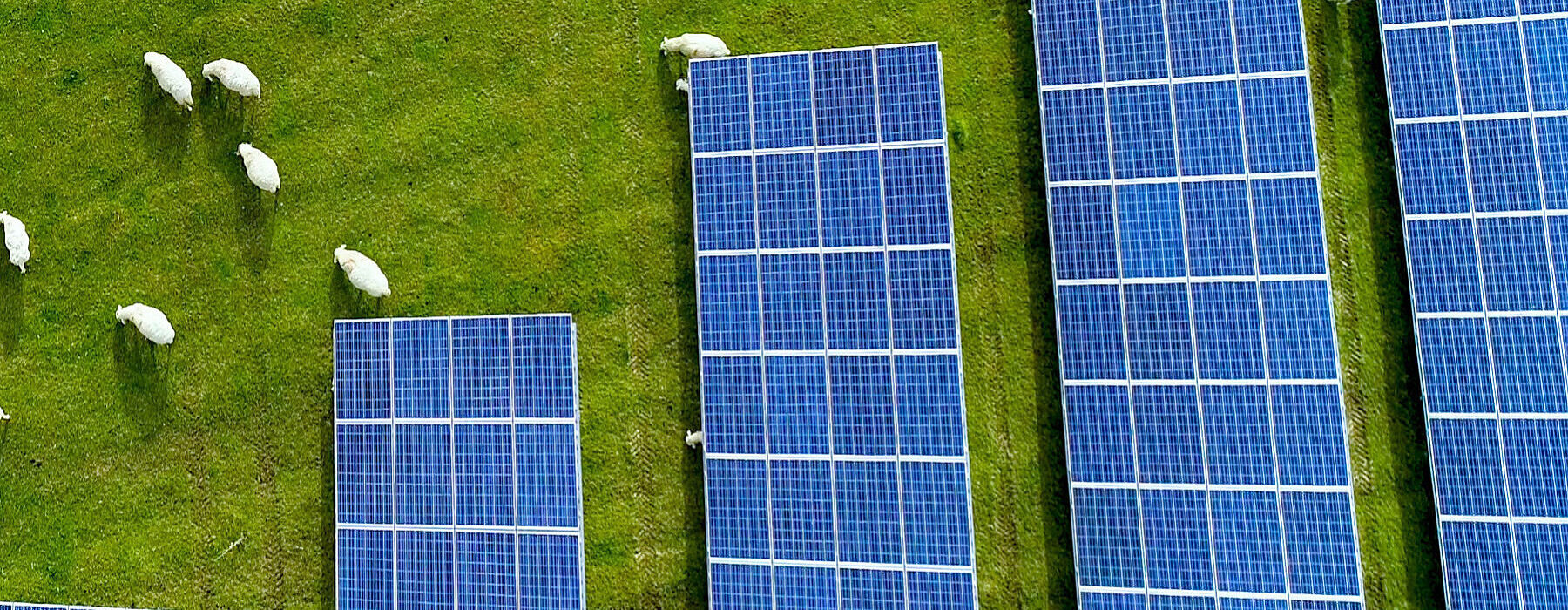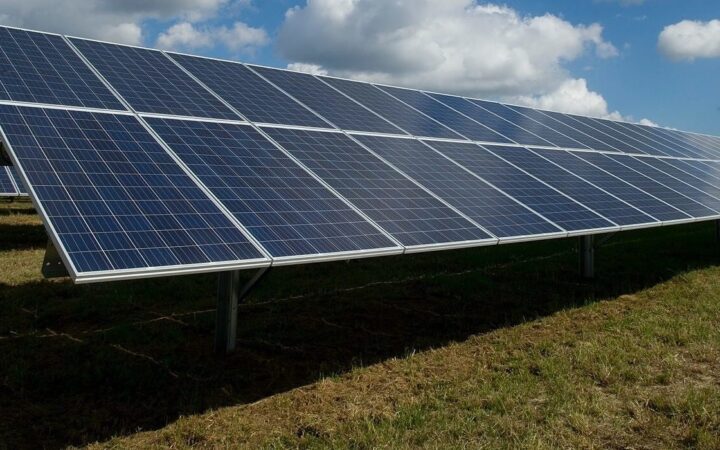This toolkit is intended for state and municipal lawmakers, farmers, and researchers hoping to improve or better understand their community’s farmland solar policies. It identifies key areas of state law affecting how much and what kind of solar development occurs on farmland, as well as farmers’ access to clean energy.
Introduction
In the absence of federal action in the United States, many state and local governments have enacted policies that are committed to drastic reductions in greenhouse gas emissions and development of clean energy alternatives to fossil fuels. While photovoltaic solar generation currently occupies less than 2% of the total U.S. electricity market, by 2050, that percentage is likely to reach at least 40% to meet increasingly ambitious state government goals and mandates.
Solar energy has already seen explosive growth in recent years. By 2019, the number of solar installations had doubled to two-million Solar PV installations across the United States contributing over seventy gigawatts (GW) of generating capacity to the electric grid. The U.S. Energy Information Administration expects an additional 13.5 GW of solar capacity to come online in 2020. While the majority of new capacity will come from utility-scale arrays, new residential and commercial solar will experience record growth across the U.S., with 5.1 GW of added solar capacity by the end of 2020.
While solar radiation potential is most favorable in the desert southwest, the eastern great plains, and the central Rocky Mountains, solar installations are already contributing power to regional transmission systems and local distribution grids across the country. A “good site” for any ground-mounted solar array has a few basic requirements: decent solar radiation, a relatively flat and undeveloped parcel of land, and access to suitable power lines for inter- connection. Without state policies in place to help manage solar siting, arrays are likely to be located on agricultural land and other green spaces and “greenfields” that meet the basic requirements and are often less expensive to develop than other site options.
With 900 million acres of farmland in the United States, conversion of some acres of farmland to solar energy production may seem inconsequential. However, farmland in the United States has already been shrinking due to residential, commercial, and industrial development. Between 1982 to 2018, the U.S. lost an estimated 39 million acres of farmland, with 15 million acres converted in the last six years. With the accelerating disruptions of climate change, it is particularly concerning that farmland is being converted to other uses at a time when it is needed more than ever for food production and the environmental support it provides through ecosystem services. As climate change progresses, agricultural production is likely to face reduced output, as well as increased flooding, heat, drought, and wildfires. All of this will add stress to crops and livestock, while increasing soil erosion, soil degradation, and insect pests. At the same time, the contribution of farm- land to climate mitigation is significant, including increasing and preserving carbon storage in soil. For example, farmlands that promote no-till farming with cover crops can absorb as much as 1 to 2 metric tons of CO2 per hectare.
Smart Farmland Solar Policy
As solar energy is a flexible technology that may be installed in a wide variety of locations, solar siting policy should steer installations away from valuable agricultural land and toward structures, previously developed sites, previously contaminated lands, and marginal lands, where solar energy may be captured without competing with agricultural production and land preservation. Policy should strive to balance agricultural land conservation with ensuring farmer access to clean energy, as solar development can also reduce farm electric bills and improve farm viability.
State policies can require varying degrees of oversight for solar development on agricultural land based on state preference and political expediency. Simple policies include requiring enhanced review for projects proposed on farmland, while comprehensive policies can establish specific criteria and performance standards for solar arrays impacting agricultural land and uses. Categorizing solar arrays by capacity size, acreage, and relationship to on-site load provides easy ways to apply regulations to certain types of solar projects. Making basic regulatory distinctions between valuable and marginal farmland can improve both siting outcomes and farmer access to clean energy. Policies that identify and incentivize preferred sites for solar development and “dual use” or “agrivoltaic” solar installations are more complicated to integrate into solar development permitting, metering, inter- connection, and other land-use and energy policies, but provide the most robust strategies for farmland protection in by states today.
Benefits of Smart Farmland Solar Policy
This research analyzes state solar siting laws to identify existing policy strategies for farmland protection and options for regulatory design, as well as avenues for policy improvement. Outdated or overly general solar siting policies can threaten farmland with conversion from agricultural production to energy generation. This can reduce agricultural use and production, affect the quality of land and soils, complicate farmland transfer and access to new farmers, and affect local land use and zoning over the long-term. When sited thoughtfully, solar development invigorates rural economies, creates new sources of revenue for farmers, increases energy self-reliance on farms, and helps meet aggressive renewable energy goals. State solar siting policies can successfully balance the need for renewable energy development with protection of agricultural uses and farmer access to clean energy.
Use of this Toolkit
This toolkit is intended for state and municipal lawmakers, farmers, and researchers hoping to improve or better understand their community’s farmland solar policies. It identifies key areas of state law affecting how much and what kind of solar development occurs on farmland, as well as farmers’ access to clean energy. It provides examples of state laws and regulations in a variety of states that have enacted smart farmland solar policies, which can provide a useful starting point for crafting solar regulations that work for your state and community.
Acknowledgements
Thank you to the following clinical students at Vermont Law School’s Institute for Energy and the Environment who contributed to the development of this resource: Cody Kabus, Carlson Swafford, Ludovica Mastrobuono, Nicholas Lansfeldt, Nicole Young, Avery Newell, Nicholas Clemente, Christopher Hiene, Bede Emuka, Sarah Puzzo, Vishrut Shelat, and Daniel W. Brown.
Suggested Citation
Genevieve Byrne et al., Farmland Solar Policy Design Toolkit, Farm and Energy Initiative (Sept. 1, 2021), https://farmandenergyinitiative.org/wp-content/uploads/2021/09/FSPDT_FINAL_UPDATE_PRINT.pdf.



